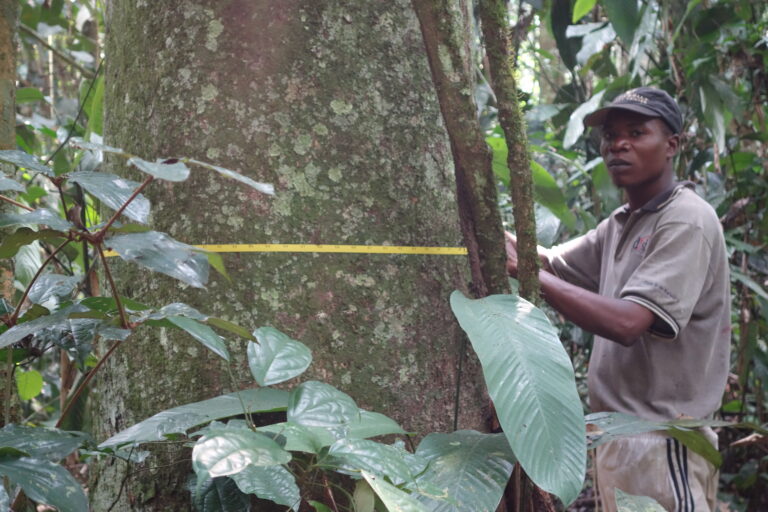Scientists studying the impact of record heat and drought on intact African tropical rainforests were surprised by how resilient they were to the extreme conditions during the last major El Niño event.
The international study, reported in Proceedings of the National Academy of Sciences and funded by the Natural Environment Research Council and the European Research Council, found that intact rainforests across tropical Africa continued to remove carbon from the atmosphere before and during the 2015-2016 El Niño, despite the extreme heat and drought.
Tracking trees in 100 different tropical rainforests across six African countries, the researchers found that intact forests across the continent still removed 1.1 billion metric tons of carbon dioxide per year from the atmosphere during the El Niño monitoring period. This rate is equivalent to three times the carbon dioxide emissions of the UK in 2019.
During 2015-2016, African rainforests experienced warming of 0.92°C above the 1980-2010 average, and the strongest drought on record, both driven by the El Niño conditions on top of ongoing climate change. This event gave the scientists a unique opportunity to investigate how Africa’s vast tropical rainforests could react to heat and drought.
Lead author Dr Amy Bennett, from the University of Leeds’s School of Geography, said, “We saw no sharp slowdown of tree growth, nor a big rise in tree deaths, as a result of the extreme climatic conditions. Overall, the uptake of carbon dioxide by these intact rainforests reduced by 36%, but they continued to function as a carbon sink, slowing the rate of climate change.”
Tree measurements in long-term inventory plots in intact forest – unaffected by logging or fire – were completed just before the 2015-2016 El Niño struck. Emergency re-measurements of 46,000 trees across 100 of the plots in the Democratic Republic of the Congo, Gabon, Cameroon, Ghana, Liberia and the Republic of the Congo then allowed the researchers the first ever opportunity to directly investigate how African tropical forests would react to the hotter, drier conditions.
Senior author Prof. Simon Lewis, in Leeds’s School of Geography, who led the development of the Africa-wide network of forest observations, added, “Scrambling field-teams to get to our remote rainforest sites was worth all the difficulties we faced. This is the first on-the-ground evidence of what happens when you heat and drought an intact African rainforest. What we found surprised me. African rainforests appear more resistant to some additional warming and drought compared to rainforests in Amazonia and Borneo.”
African rainforests exist in relatively dry conditions compared with those across much of Amazonia and Southeast Asia. The researchers wanted to establish whether this made them particularly vulnerable to extreme climatic conditions, or if the abundance of drought-adapted tree species occurring in African forests meant that they were less vulnerable to additional warmth and drought.
The results showed that the biggest trees in the forest were largely unaffected, whereas the smaller trees grew less and died more during El Niño, potentially due to having less access to water than the larger trees.
Yet these negative effects had only modest impacts. African rainforests continued to function as a carbon sink, as the changes in the smaller trees were too small to stop the long-term increase in overall tree biomass seen in these forests over the last three decades.



